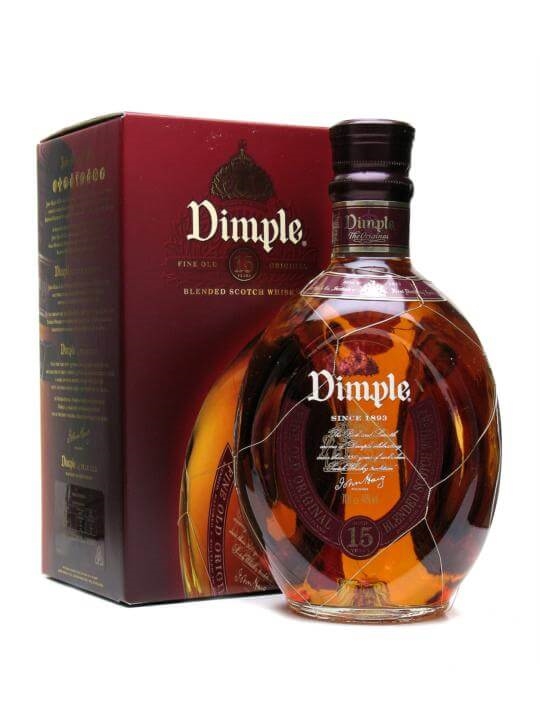
By Richard Thomas
Rating: C
In a nutshell, Whyte & Mackay blend their scotch twice. The first blending is of single malts, which are mixed together and then aged in old sherry casks. After a time, the scotch is then mixed with grain whiskey and stored in a fresh set of sherry casks for a further year of aging. Therefore, whatever the age of a Whyte & Mackay scotch, most of it is spent in that first stage, with the final mixing and aging serving as sort of a finishing process. Taken as a whole, the process is most unusual, since it is more common in whiskey-making to blend the product either before or after after aging, rather than before and in the midst of aging.Whyte & Mackay are a Glasgow label, have been in the scotch whiskey business since 1844, and are now owned by an Indian conglomerate. This is another one of those labels that, like VAT 69, were famous several decades ago (Shackleton took the stuff with him to Antarctica, and you can see boxes of Whyte & Mackay in the classic gangster film Public Enemy), but are largely forgotten in modern times. However, the label is recognizable for its thoroughly British double lion iconography, while the scotch itself is distinguished by Whyte & Mackay’s “double marriage” maturation process.
The Scotch
Whyte & Mackay’s 13 year, also referred to simply as “The Thirteen,” is their second-tier scotch, only one step up from the entry-level “Special” label. The bottle is pretty standard stuff, with a metal screw top, and shows off the scotch’s glowing amber-gold coloring nicely. My bottle came with an aerator, however, and I simply detest those things. As the name implies, it is bottled after 13 years of maturation, and at 40% alcohol.
The scent of the Thirteen is subdued and mellow, with a hint of sherry. The flavor of Whyte and Mackay’s 13 year continues the mellowness, becoming floral, sweet and just a little spicy. The scotch washes down with a mildly spicy finish.
The Price
Whyte and Mackay isn’t common in the United States, and if you can find a bottle, it will retail for between $25 and $35. It is somewhat more common in Europe, where you often find it priced for between 16 and 18 euros, but sometimes as much as 20 euros. If you are traveling in India, Whyte and Mackay becomes a nice choice compared to some of the rotgut being passed around there as “whiskey.”
Awards
Whyte and Mackay’s 13 Year Old won a Silver at the 2010 International Wine and Spirits Competition.

